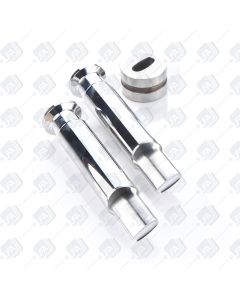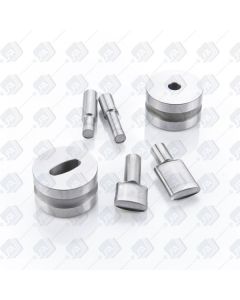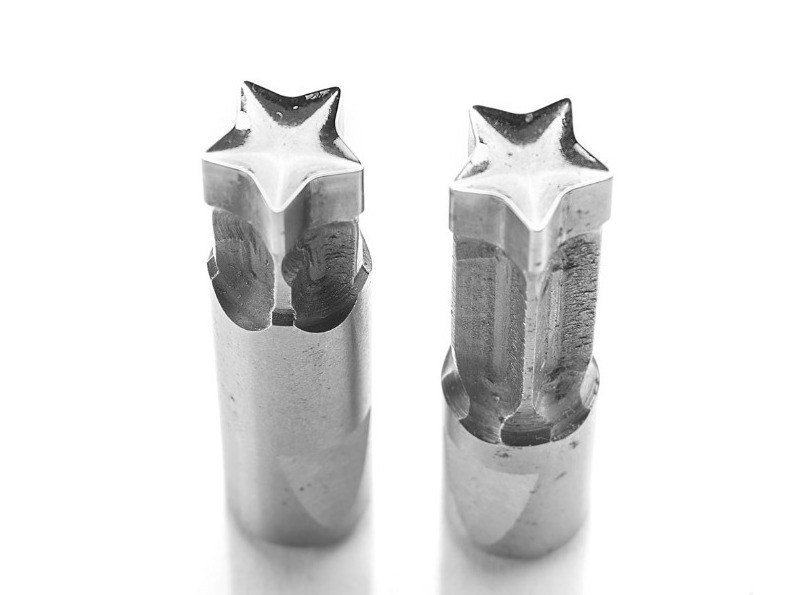模具和设备必须定期检查和维护,对于片剂生产厂家来说,这是一项必须承担且耗费时间的工作。幸运的是,现在出现了一些机器及相关科技,让包括压片机过程检验和调整等方面的工作变得更加简单。本文将简单介绍一些近期此类新机器及技术,或许能为片剂生产厂家及他们的业务提供一些帮助。
Compression Tooling Equipment
One of the major problems that tablet manufacturing companies face is that of tablet sticking. This problem occurs when granulated powder sticks to the punch surface causing deformed tablets. The problem is very costly not only for the manufacturers but also for the formulators. The cause of sticking is subject to much on-going research, but it is important that basic steps should be taken by the tablet maker to ensure cleanliness of the tablet press and tools. Tooling suppliers recognize the importance of tooling maintenance in preventing the sticking problem. I Holland in fact recommends seven-steps in maintaining the tooling quality. These 7 steps to proper maintenance can be summarized as:
- Cleaning
- Wear and tear assessment
- Repair
- Measuring to ensure accuracy of the equipment
- Polishing
- Lubrication
- Storage
The quality of the punch and dies can be checked using an optical microscope. This can reveal defects that are invisible to the naked eye, and which may be responsible for the entrainment of miniscule granules that can lead to sticking.
Tooling vendors have investigated different steels and coatings that may help prevent sticking. Selecting the right material for particular formulations could be a very time-consuming process, which could involve field-testing in the client’s location as well as testing to be conducted in laboratories in order to find a solution to address the problem. I Holland’s TSAR program is a collaboration with the University of Nottingham’s School of Pharmacy and experts in the Laboratory of Biophysics and Surface Analysis. The TSAR researchers have been developing a ‘predictive tool’ to determine the ideal punch or die coating solution that could prevent sticking of the powder granules to the metal surface. This program could aid in the selection of the most appropriate tool and coatings device without the need for time-consuming tests.

The TSAR program researchers have used an Atomic Force Microscopy (AFM) to note the adhesive forces on the tablet punch face. The AFM can expose the chemical and mechanical properties such as elasticity and strength of adhesion of particles as well as molecular bond rupture. The AFM can scan the surface of a punch face, investigating how these properties vary according to surface topography and how they change with the type of coating applied applied at various humidity levels.
Standard surface-science equipment such time-of-flight secondary ion mass spectrometry (SIMS), Xray photoelectron spectroscopy (XPS) and Raman spectroscopy are used by the TSAR researchers to examine surface species at the nano-scale to identify how various ions interact with the surface of metals and to comprehend the interactions that happened during the sticking process.
Principle Component Analysis or PCA is a statistical technique, which is being used to analyze and generate data that may explain how adhesion happens when chemicals are exposed to different surfaces. The predictive tool is then validated by the results obtained from compression experiments from various punch tip coatings and formulations.
Even if companies perform regular maintenance, in most cases, the root cause of the problem of sticking is the formulation, or its particle size. If the properties were set, companies would then have no choice but to find the solution in the tooling or press. In certain instances, one would be able to reformulate the formulation in order to achieve a lower probability of the sticking to occur.
Tools for Screening
It is possible to assess the sticking propensity of material simply by visual inspection, but this is notoriously unreliable because it is subjective and because there are many complex issues that give rise to sticking. In order to address this problem, Pfizer researchers have developed a simple tool to measure the tablet sticking propensity, which can be used to check the sticking level for different formulations and ingredients. They have produced a custom tabletting tool that has a removable tip, which can be weighed to measure the amount of adhered powder. This gravimetric method is very successful when it comes to identifying the sticking level during the design stage of a tablet product and has greatly reduced the risk during the scale up. The company can actually customize the API and drug product formulation to make sure that sticking will not go above a threshold level before tablets are manufactured in volume. Such screening is also useful for different campaigns such as assessing the inspection frequency of tablets as well as in analyzing the propensity for sticking for large-scale manufacture.

订阅我们的最新资讯
Sticking to research
As research in sticking has progressed, so advanced techniques such as molecular modelling as well as bulk chemical and physical characterization have been brought in to help identify the different sticking patterns that characterize different powders. Once addressed and identified, these patterns may pave the way for drug formulation to be adjusted to reduce the sticking problem. Current research conducted by Pfizer, for example, is focused on why some APIs stick more than others; the company is also investigating the effects of solid API attributes in relation to sticking. Both the computational and experimental approach is crucial, as they will help researchers to determine the root cause of the problem. Tooling designs and surface area treatments may also be included in the research.
Evolution of the Tablet Micro Structure
Clearly the microstructure of compacted powder must have an influence on the issue of sticking. Researchers such as Gonzalez (Purdue University) and Cuitino (Rutgers and the State University of New Jersey) have developed a “mechano-chemical model” which is a computational model that can calculate the evolution of the microstructure of a compacted powder as well as the inter-particle forces that occur during powder compaction. Due to the various properties of the compacted tablet that can be attributed to its microstructure, such models may be used as a vehicle to help develop an understanding of the powder compaction process, and a means of analyzing how the process can affect the performance of the product.
As powders have the tendency to stick or pick (which is the adhesion of powder to the die walls and tool surfaces) it should be possible to explain these features in terms of inter-particle bonding and particle wall adhesion. If the particle wall bonds, for example, are stronger than the inter-particle bonds, the fragile inter-particle bonds will break when the tablet is ejected, causing the sticking or picking. If the particle wall adhesion is not as strong as the inter-particle bonds, it is possible that internal cracks might occur. If the bond strengths during compaction are balanced, it would be expected that no defects should occur. With experimental procedures that are available today it is not yet possible to measure the particle-particle and particle-wall forces, researchers have therefore developed a computer model which can precisely describe the system. The model is based on particle mechanics, which defines each particle in the powder as an individual object. The discrete model computes the rearrangement of the particles into a compact bed, and the deformation of the powder bed by compression, from which the microstructure of the compacted powder is predicted.
External Lubrication
Many tooling vendors have expressed an interest in the use of external lubrication in order to eradicate sticking, addressing additional ejection forces or to provide a different way of using the lubricant embedded in the formulation should this lubricant cause problems such as hardness or dissolution. With external lubrication, the lubricant is atomised with air and sprayed using a nozzle, which is then mounted near the tablet takeoff. A fine layer of the lubricant is then sprayed on the exposed upper and lower punch and die wall.
For complex products, the method can lower the incidence of tablet sticking or poor ejection caused by excessive ejection forces. An example would be tablet geometries that have a large sidewall surface area, leading to a great deal of friction between the die wall and side of the tablet. The external lubricant is sprayed onto the die wall in order to decrease the wall-tablet friction and eradicate the need for large ejection forces that can cause damage to the equipment.
External lubrication can help lengthen the life of the punch heads, faces, scrape off bars of tablet presses as well as the ejection cams. External lubrication can be used to lower the ejection force as well as the scrape-off force. Indeed, external lubrication can also lower the percentage of broken tablets, which can affect the whole production leading to reducing the process downtime and increased production volume.
In certain circumstances, external lubrication can decrease ejection forces by up to 50%; it also helps to improve the integrity of the tablet’s outer edge. Nonetheless, external lubrication may not be suitable for all tablets. The lubricating system is expensive and can be quite complex to set up, apart from adding to the machine cleaning requirements. Tablet manufacturers also have the option to choose a substitute or alternative solution for external solution. In addition to external lubrication, the tooling equipment may also be coated to help reduce sticking. Both systems have been used for some complex tablet manufacturing.

Magnesium stearate which is not water-soluble and at a concentration level of 0.5 -2% can cause hydrophobic bridges between particles, which can delay tablet dissolution. The delay can cause problems with the release of the APIs in the tablet. By applying external lubricant, poorly soluble APIs can be made more soluble as a result of improved disintegration. Extenal lubrication can also help with effervescent tablets, by reducing the amount of water-insoluble magnesium stearate that needs to be added to the tablet, thereby preventing the white film effect.
Other benefits of external lubrication is that it can be used to improve the disintegration or dissolution of oral tablets as in certain cases, internal lubrication can affect the hardness of the tablet. Research carried out by Pfizer, for example, shows that external lubrication can improve tablet’s hardness when compared with internal lubrication when tested using various compression force. The research showed a consistent level of magnesium stearate across the surface of the tablet as well as all over the tablet production run.
More research
Clearly there is much to learn about tablet sticking, and it continues to be a major problem in the tabletting industry. Using chemical engineering principles, a simple model was developed by Rutger’s Engineering Research Center for structured Organic Particulate Systems (C-SOPS) that predicts the pressure developed at the die wall as a result of compaction pressure applied between the upper and lower punches. Microstructural changes as well as inter-particle and particle-wall forces can be computed which should help in our understanding of compaction and the issue of tablet sticking. The material properties predicted by the C-SOPS and other models, can be validated against hardness tests carried out on actual tablets, as well as observing the behaviour of the of tablet press during the compaction process. Tomography is also a useful technique that can be used by researchers to measure density gradients of the tablet material. The technique can identify surface defects or indeed internal defects that are otherwise invisible to the naked eye. Such information should be able to give researchers more help in optimizing punch shape and compression conditions to minimize defects in the future.
Summary
Research in university and company laboratories is shedding light on the factors that influence tablet sticking. In particular, information about adhesive forces and the interaction of particles is emerging that should help our understanding of sticking and how other tablet defects arise. Sticking can be minimised by screening formulations and the setting of tabletting machines so that consistent dust-free tablets can be produced. Screeing unfortunately can be very time consuming and researchers are investigating ways of using analytical methods or models that can provide solutions quickly.









